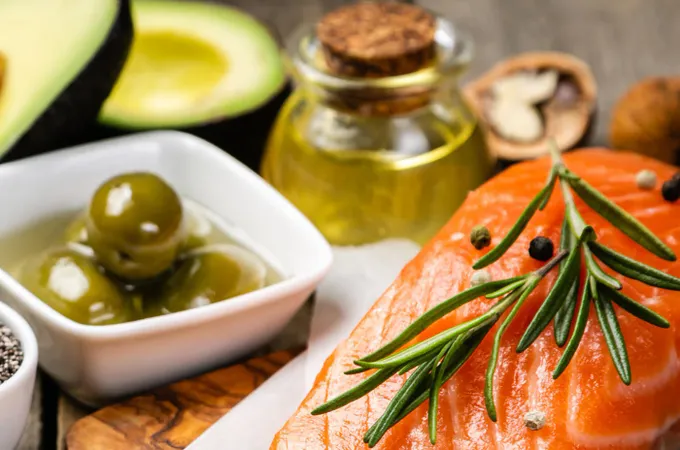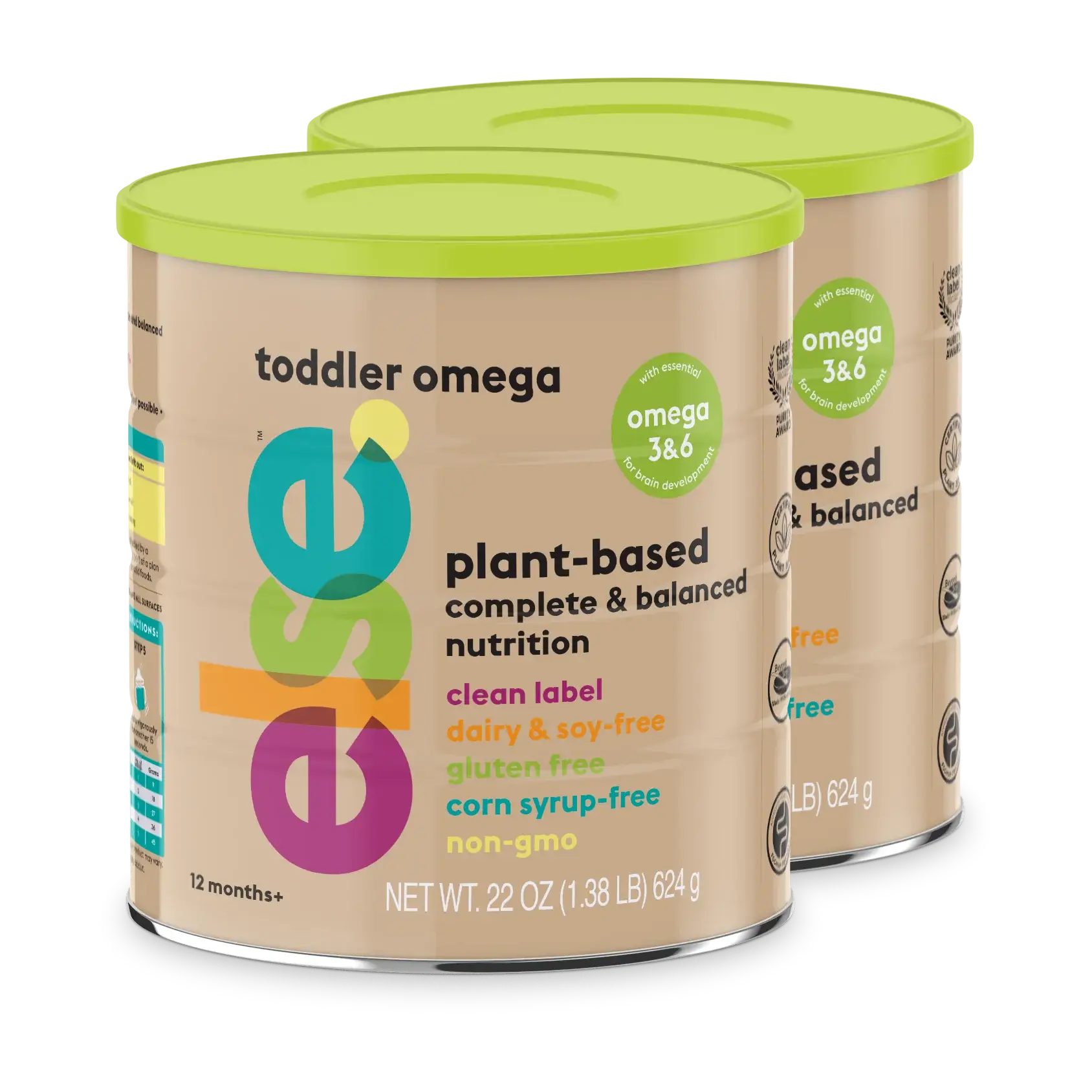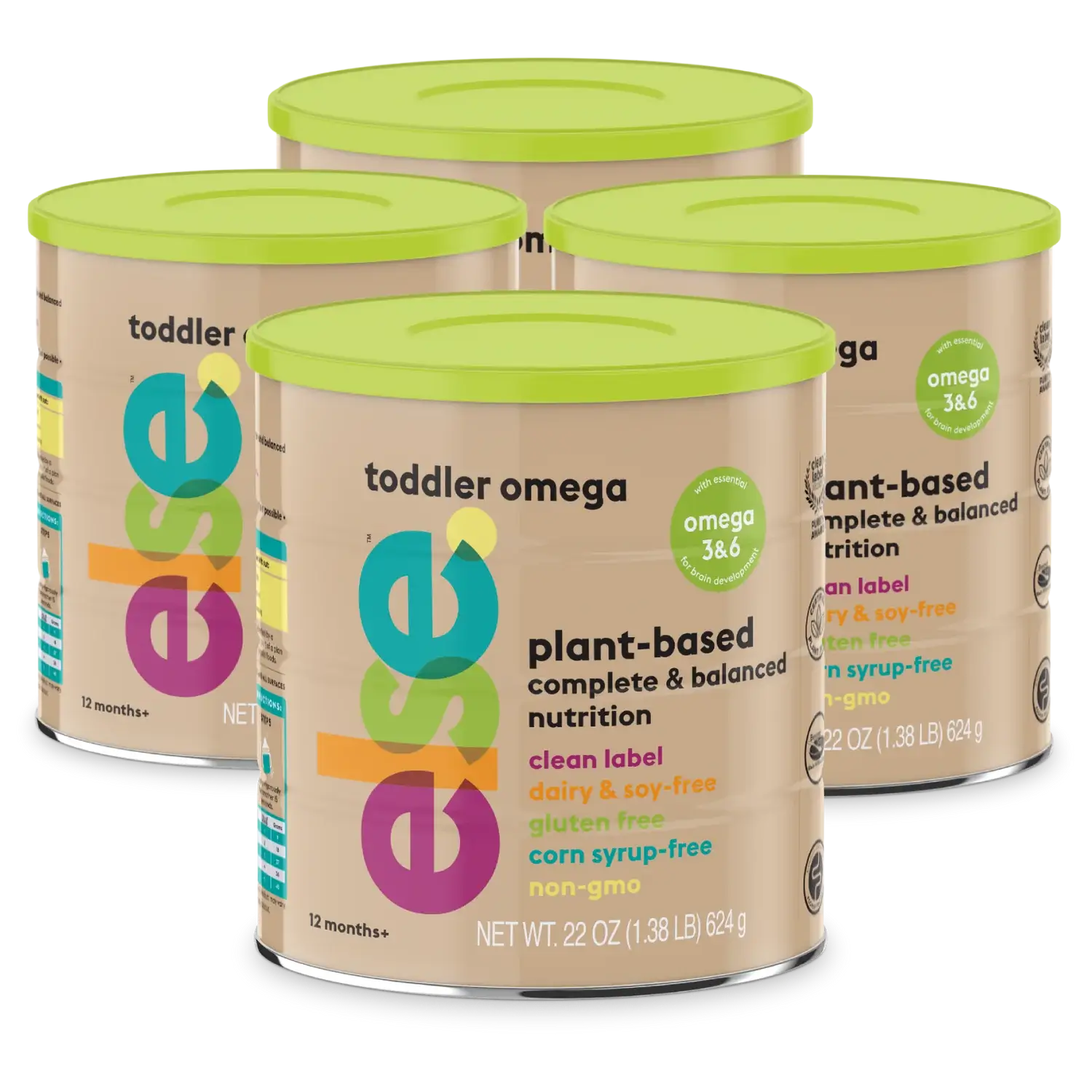Omega 3 vs 6 vs 9: Benefits and Differences
Discover the benefits and differences between Omega 3, 6, and 9 fatty acids. Learn how Omega 3 benefits kids and the importance of incorporating these essential nutrients into your diet.
Published May 27, 2024

Your goal as a parent is to provide your baby or kiddo with the finest nourishment possible. You might have observed that omega fatty acids are essential to their diet. These beneficial fats are crucial for their physical and mental growth as well as general wellness. We will discuss what omega fatty acids are in this article, why they are important for your child’s health, and the best way to include them in their daily meals. Omega 3-6-9 fatty acids each have various health benefits but they are all important for your child's optimal growth and development.
» Ensure your child's adequate amount of all omega fats with this toddler formula
Understanding Omega Fatty Acids
Our bodies need omega fatty acids to function properly, and each type supports many physiological processes in a distinctive manner.(1)
In the early years of life, omega fatty acids are crucial. They promote brain growth, intellectual capacity, and clarity of vision. Omega-3 fats in particular have been associated with decreased risk of behavioral issues in kids, as well as improvements in learning ability and memory. In addition to promoting immune system development, omega-3s have protective effects that help mitigate infection risk and allergic reactions. Consuming a variety of foods rich in the different omega fatty acids are extremely beneficial to development.
» Learn more about the benefits of omega-3 and omega-6 fatty acids
What are the types of omega fatty acids and what do they do?
Omega-3, omega-6, and omega-9 are the three primary subtypes of fatty acids. They are are essential for an infant's and toddler's well-being. Each category has specific attributes and roles throughout the body. Else Nutrition's Toddler Omega Formula is specificaly tailored to fulfill your child's needs in omega fattys and other nutrients.
Omega-3 Fatty Acids
Alpha-linolenic acid is principal omega-3 fatty acid, also known as ALA. The two most well-known omega-3 fatty acids, EPA and DHA, can be made by the body in small amounts from ALA.
- Eicosapentaenoic acid (EPA) is found in aquatic foods such as fatty fish. It functions in the body to help balance inflammation, foster cardiac wellness and healthy blood pressure, and assists with cognitive function.(5)
- Docosahexaenoic Acid (DHA) is widely present in oily fish, seafood, and solutions made from algae. It is crucial for the growth and function of the brain, particularly throughout pregnancy and the initial stages of life. DHA has a significant role in human brain and eye development, supporting cognition and visual perception. (6)
» Curious about nutritional needs of omega-3 for your baby? Find answer here
Benefits of Omega-3 Fatty Acids
These fatty acids play an essential role in the general well-being and growth of newborns and toddlers. They (2):
- Aid Brain Development: DHA, especially, is crucial for the growth of the brain and neurological framework, enhancing mental and learning abilities.
- Improve Vision: DHA helps the retina to grow and stay healthy, boosting the vision.
- Enhance immune function, by strengthening the body's defenses to help lower risk and severity of diseases, reactions, and asthma in infants and young children.
- Decrease inflammation by promoting an optimal inflammatory response and possibly decrease risk of chronic infections.
Several health benefits, such as a reduced likelihood of heart disease, enhanced memory, and improved inflammatory responses have all been linked to the intake of omega-3 fatty acids.
» Discover how to boost your child's natural immunity with rich in omega-3 foods
Omega-6 Fatty Acids
Another class of polyunsaturated fats is omega-6 fatty acids. Although kids require omega-6 fatty acids in moderation, they must keep a proper equilibrium alongside omega-3 fats for the body’s immune system and inflammatory response to function properly. Linoleic acid, also referred to as LA, is the principal omega-6 fatty acid.(7)
Pro-inflammatory eicosainoids originate from the omega-6 fatty acid arachidonic acid, also called ARA. ARA can be made by the body from LA. Eicosanoids control inflammatory processes, blood coagulation, and various other cellular functions.(8) However, ARA also plays an important role in visual and neurodevelopment. Nevertheless, consuming too many omega-6 fats, particularly from packaged and deep-fried foods, can cause an omega-3 fatty acid imbalance and encourage persistent inflammation.
» Prevent inflamantory diseases by incorporating these omega rich meals into your 1 year's diet
Benefits of Omega-6 Fatty Acids
These fatty acids are also essential for the health and growth of children. Their roles include (3):
- Supporting the central nervous system; ARA is critical for brain growth, promoting intellectual development.
- Promoting the ongoing growth of healthy skin through preservation of moisture and maintaining its inherent protecting barrier.
- Enhancing cell development and proliferation, which helps young children grow and achieve their full potential.
Omega-9 Fatty Acids
Because they have only one double bond in their molecular makeup, omega-9 fatty acids are considered a monounsaturated fat. Omega-9 fatty acids are not regarded as essential because the human body can create them in small quantities. Oleic acid is the name of the predominant omega-9 fatty acid.
By assisting in the reduction of bad ("LDL") cholesterol content and sustaining an appropriate amount of cholesterol in the human body, omega-9 fatty acids support cardiovascular wellness.(9)
» Did you know a vegan nutrition shake for kids lowers cholesterol? Read more here
Benefits of Omega-9 Fatty Acids
Despite the fact that omega-9 fatty acids are not essential, newborns and toddlers can still benefit from eating them. They promote heart health and cardiac wellness by helping to maintain the body's cholesterol at acceptable levels. (4)
Which omega is most popular and why?
Omega-3 fats tend to be the most well-known omegas. The growing recognition of these fats can be attributed to a number of factors:
- The positive health impacts of omega-3 fats, especially DHA and EPA, have been thoroughly studied. Many research investigations have examined their beneficial impacts on a variety of medical conditions, including decreased inflammation, improved vision, mental clarity, and heart health. The investigations have helped omega-3 fatty acids become more popular and widely recognized.(10)
- Omega-3 fats seem beneficial for numerous individuals because they have a variety of health advantages. The advantages involve lowering the likelihood of cardiovascular illness, encouraging neurological development and functioning, enhancing cognition, improving vision, lowering inflammation, and maintaining a healthy weight.(11)
- Omega-3 and omega-6 fatty acids are often unequally distributed in the present-day diet, particularly omega-6 fats dominating in comparison to omega-3. The increased intake of commercial and processed meals, especially those that are heavy in omega-6 fatty acids, is frequently blamed for this discrepancy (12). The awareness of the disparity has generated excitement about boosting the intake of omega-3 fats fatty acids to reestablish an ideal equilibrium.
- Supplements that have omega-3 are becoming increasingly popular as a practical means to enhance omega-3 intake. Supplements like these provide a concentrated level of EPA as well as DHA, thus rendering it simpler for people to consume the recommended amounts of omega-3 fats.
- For general well-being and health, omega-3 fatty acid consumption is regularly advised by several health organizations, including the American Heart Association. They help omega-3 fats to receive a greater reputation.(13)
Although omega-3 fatty acids are well-known, it's important to remember that a proper equilibrium among omega-3, omega-6, and omega-9 fatty acids is important for optimal wellness. Utilizing a variety of food items that offer each of the three kinds can improve your overall health. Every kind has specific roles and perks.
» Support your toddler's growth and development with this rich in omega fats toddler formula
Omega 3 vs 6 vs 9
The main distinctions between omega-3, omega-6, and omega-9 fatty acids are shown in the following table:
| Fatty Acid | Type | Functions |
|---|---|---|
| Omega-3 | Polyunsaturated | Brain health,anti-inflammation, heart health |
| Omega-6 | Polyunsaturated | Immune system, cell growth, brain function |
| Omega-9 | Monounsaturated | Heart health, anti-inflammation |
Which foods contain these fats?
It's important to remember that different dietary sources may contain different quantities of omega fatty acids. You can guarantee an appropriate amount of omega fatty acids in your daily meals by including a number of these items.
Fatty Acids and Their Sources
Omega-3
Fatty Fish: Salmon, herring, sardines, mackerel
Oils: Cod liver oil, krill oil, algal Oil
Nuts & seeds: Walnuts, chia, hemp, and flaxseeds
Fortified Foods
Omega-6
Oils: Soybean, corn, sesame, sunflower, safflower, evening primrose oil
Nuts & seeds: Walnuts, pumpkin seeds, sesame seeds
Omega-9
Olive Oil
Avocados
Nuts & seeds: almonds, cashews, macadamia nuts, hazelnuts
» Find out the best ways to inculde omega fats in your child's diet
Does your toddler really need all kinds of omega acids?
Here are a few important things to keep in mind while choosing omega-fatty acids for young children:
- Omega-3 Fatty Acids: DHA is particularly important for the growth and operation of the nervous system. They are crucial for children's healthy development and continual growth. Toddlers may benefit from consuming foods high in omega-3 fats, such as oily fish, or from plants, including chia and flaxseeds.
- Omega-6 Fatty Acids: These are similarly important considering the development and growth of children, although the standard Western diet frequently has them in higher quantities. Omega-6 fats should be present, but keeping the ratio in check is critical. A healthy proportion can be maintained by restricting overeating omega-6 fatty acids through fried or processed foods and maintaining an inventory of whole food.
- Omega-9 Fatty Acids: Since the human body can make certain omega-9 fats on its own, they are not considered essential fats. Omega-9 fatty acid-rich foods, including olive oil and avocados, can still help with cardiac wellness and have anti-inflammatory properties, among other extra health advantages.
Conclusion
In conclusion, omega fats are crucial for an infant and toddler's optimal development and healthy growth. Omega-3 fatty acids are important for brain growth and functions, cardiovascular wellness, and inflammation management. They can be obtained from oily fish, seeds such as chia, flaxseeds, and walnuts. Vegetable oils, nuts, & seeds contain omega-6 fatty acids, which enhance growth and immune system function but have to be regulated by omega-3 intake. Omega-9 fatty acids are considered non-essential, but consuming them in foods like olive oil, avocados, and almonds can positively affect heart health. As parents, you can ensure your children get the nutrients they require to maintain healthy development and general well-being by giving them a diverse diet incorporating these omega-rich foods.
The content and advice provided in this article is for informational purposes only and is not a substitute for medical diagnosis, treatment, advice for specific medical conditions. Always consult a pediatrician to understand the individual needs of your child.
References
- Marton LT, Goulart RdA, Carvalho ACAd, Barbalho SM. Omega fatty acids and inflammatory bowel diseases: an overview. International journal of molecular sciences. 2019;20(19):4851.
- Gammone MA, Riccioni G, Parrinello G, D’orazio N. Omega-3 polyunsaturated fatty acids: Benefits and endpoints in sport. Nutrients. 2019;11(1):46.
- Djuricic I, Calder PC. Beneficial outcomes of omega-6 and omega-3 polyunsaturated fatty acids on human health: An update for 2021. Nutrients. 2021;13(7):2421.
- Kehoe C. The Top Benefits Of Omega 3, 6, and 9. Nutrition. 2023:1.
- Xiao B, Li Y, Lin Y, Lin J, Zhang L, Wu D, et al. Eicosapentaenoic acid (EPA) exhibits antioxidant activity via mitochondrial modulation. Food Chemistry. 2022;373:131389.
- Li G, Li Y, Xiao B, Cui D, Lin Y, Zeng J, et al. Antioxidant activity of docosahexaenoic acid (DHA) and its regulatory roles in mitochondria. Journal of Agricultural and Food Chemistry. 2021;69(5):1647-55.
- Marangoni F, Agostoni C, Borghi C, Catapano AL, Cena H, Ghiselli A, et al. Dietary linoleic acid and human health: Focus on cardiovascular and cardiometabolic effects. Atherosclerosis. 2020;292:90-8.
- Calder PC. Eicosanoids. Essays in Biochemistry. 2020;64(3):423-41.
- Shen S, Gong C, Jin K, Zhou L, Xiao Y, Ma L. Omega-3 fatty acid supplementation and coronary heart disease risks: a meta-analysis of randomized controlled clinical trials. Frontiers in Nutrition. 2022;9:809311.
- Gutiérrez S, Svahn SL, Johansson ME. Effects of omega-3 fatty acids on immune cells. International journal of molecular sciences. 2019;20(20):5028.
- Wang Y, Liu R, Chang M, Wei W, Guo Y, Jin Q, et al. Does omega-3 PUFA-enriched oral nutritional intervention benefit cancer patients receiving chemo (radio) therapy? A systematic review and meta-analysis of randomized controlled trials. Critical Reviews in Food Science and Nutrition. 2021:1-16.
- Kaliannan K, Li X-Y, Wang B, Pan Q, Chen C-Y, Hao L, et al. Multi-omic analysis in transgenic mice implicates omega-6/omega-3 fatty acid imbalance as a risk factor for chronic disease. Communications biology. 2019;2(1):276.
- Skulas-Ray AC, Wilson PW, Harris WS, Brinton EA, Kris-Etherton PM, Richter CK, et al. Omega-3 fatty acids for the management of hypertriglyceridemia: a science advisory from the American Heart Association. Circulation. 2019;140(12):e673-e91.













